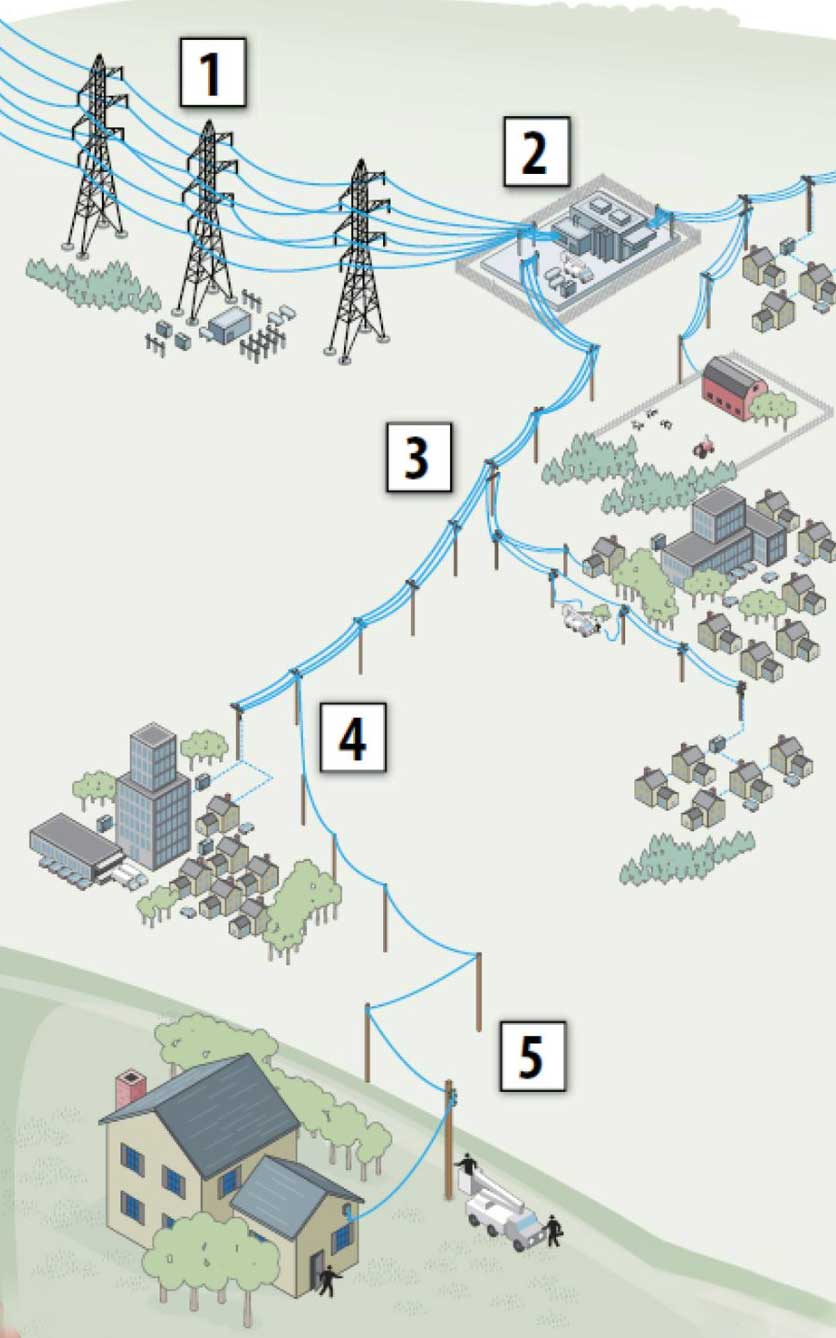When electricity goes out, most people expect it to be restored within a few hours. But when a major storm causes widespread damage, like the one we’re experiencing now, longer outages result.
Electrical distribution systems are complex. To understand them better, it might help to think of them as our highways and roads. The graphic below shows the “roads” electricity takes to reach your home. It’s the same route our repair crews follow to restore service safely to the greatest number of Great Lakes Energy members in the shortest time possible. During a “typical” outage, we expect damage from the “main roads” through to “Your Driveway.” The ice storm has caused damage to parts of all five key pieces in the delivery system.

1. High Voltage Transmission Lines = The Interstate Highway
Just like major highways move lots of cars between cities, transmission lines carry huge amounts of electricity over long distances from power plants. These are the tall towers with thick wires—they're like the fast-moving, high-capacity freeways of the electric system.
2. Distribution Substation = The Highway Exit Ramp
When you're getting close to your destination, you leave the highway and take an exit—this is like a substation. It slows the electricity down (reduces the voltage), so it’s safer and easier to move into neighborhoods. Substations are key transition points that send power off to different directions.
3. Main Distribution Lines = The Main Roads Through Town
After you exit the highway, you're on regular town roads. These distribution lines carry electricity through communities, kind of like how roads pass by schools, parks, farms, and businesses. They stretch out from the substations and serve entire neighborhoods.
4. Tap Lines = Residential Streets
These are the smaller roads that take you right to your driveway. Tap lines bring power down your street and past each house, delivering electricity closer to home.
The "main roads" and "residential streets" of our system average 18 poles per mile of line, and GLE serves an average of 8 members per mile of line. 18 poles to serve 8 members. In some of the hardest hit areas, we have 40+ poles broken in a row, and one pole takes an average of 6-8 hours to replace.
5. Individual Homes = Your Driveway
Finally, the service drop is the power line that connects from the utility pole directly to your house—just like your driveway connects your home to the street. This is the last step in the journey, where the power officially arrives at your home so you can flip the lights on, charge your phone, or make a pot of coffee.
While storms like this can test our patience and our power lines, please know that every crew member at Great Lakes Energy is working tirelessly—day and night—to safely restore power as quickly as possible. By following the path electricity takes to your home, we can tackle the biggest outages first and bring the lights back on for the greatest number of members. We appreciate your continued patience and understanding as we navigate these challenging times together.
We will not stop until power is fully restored.


